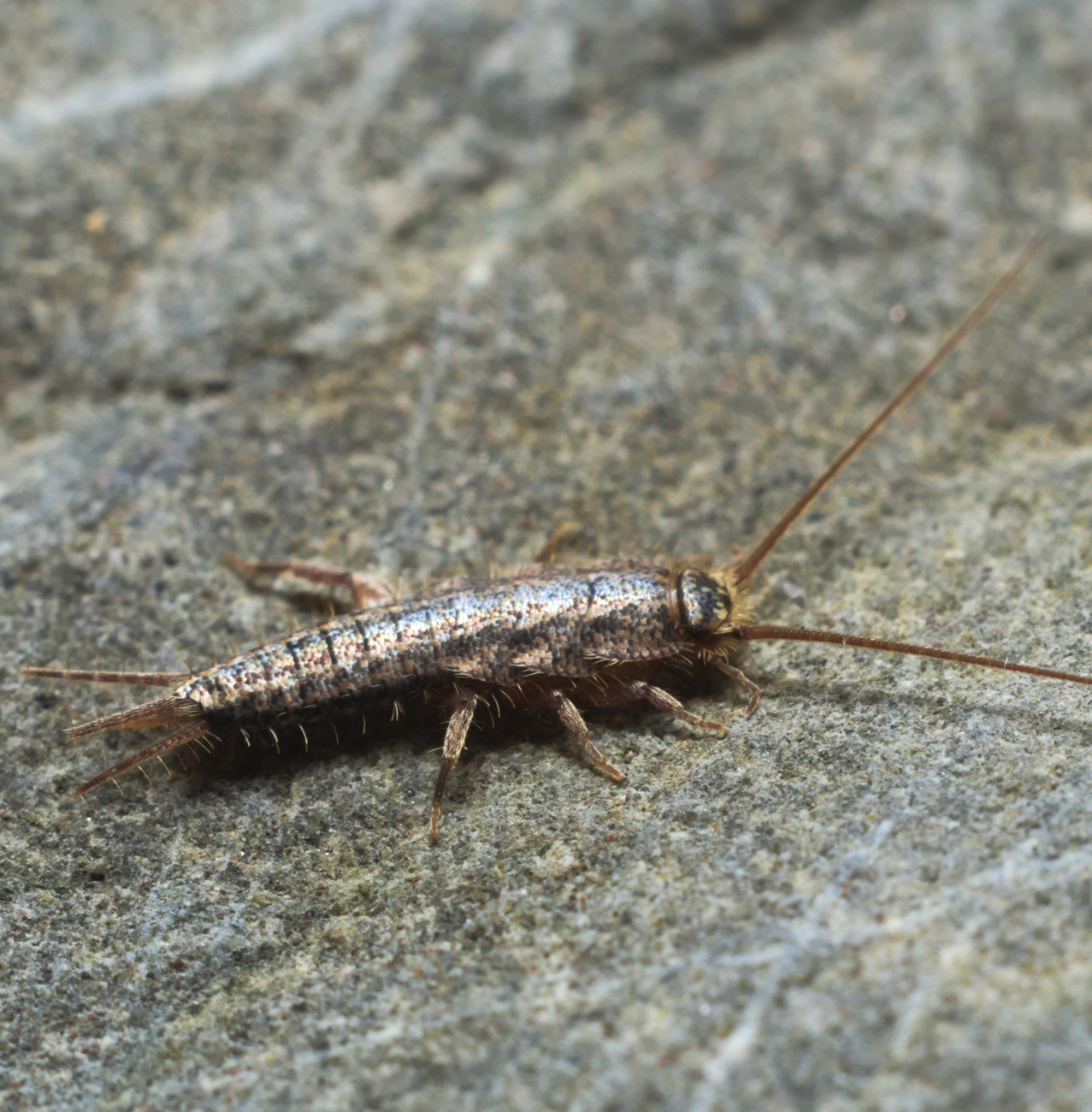24/7 Emergency Call OUT
Silverfish Removal & Control Services
A lesser-known pest, the silverfish, also known as ‘fish moths’ are not directly harmful to humans, but they can cause signific Silverfish damage to property, which means they can be a big problem, and, like any pest, in large volumes they represent a hygiene risk. As their name suggests, they are silvery in their appearance, and move in a fish-like manner. Their main food sources are mould, foodstuff and non-food sources of sugar, such as wallpaper glue and wallpaper, photographs, clothes, books, dry wall insulation, and loft insulation, amongst other things. They like humidity and damp, so are commonly found in bathrooms and kitchens, though they may also find their way into other dark and secluded spaces in your home, so be sure to check your cupboards too.

Contact us today
Speak to our expert Silverfish removal team today!
Experts in Silverfish Removal
Like a lot of pests, in large numbers silverfish can go from just being a nuisance, to causing significSilverfish and expensive damage, requiring redecoration, replacement of valuables and even extensive repairs, so they should never be left to breed. In terms of structural damage, silverfish are not a real threat, although they may reveal other issues with the environment of the house - they thrive on dust, damp, paper and human hair, so making sure your plumbing is up to scratch and your house is clean will keep them at bay. They eat cardboard boxes too, which they are often carried around within, and due to their size they can squeeze through very small spaces and are easy to miss.
Unfortunately it is difficult to prevent a silverfish infestation, as they can hide extremely well, multiply very quickly and can survive for a long time without food. As they are very small and only come out at night, it is also unlikely that you will physically see one. All of this means that you are not well placed to deal with an infestation yourself; as professionals, we take an all encompassing approach using multiple methods to identify, eliminate and prevent silverfish.
Treatment will typically include the use of chemical insecticides and diatomaceous earth to tackle the live creatures, and identification of the environmental factors that have attracted silverfish to the property, so that this can be remedied to avoid re-infestation.
What Attracts Silverfish to Your Home?
- Sugar and starches
- Glue (the dextrin in adhesives), paint and plaster
- Hair, dandruff, cellulose, coffee
- Paper, photos, book bindings, linen, clothing, silk, carpet, dead insects, their own exuvia (their moulted exoskeleton)
- During a famine, they might attack leather and synthetic textiles

Silverfish Control Specialists
Silverfish infestations are attracted to wetness in the home since these are the circumstances in which they grow. If you've seen silverfish around your house, keep a watch on dark corners, behind sinks, and in the backs of cupboards in case an infestation has taken hold.
Silverfish Pest Controller & Removal
Because silverfish are nocturnal, it might be difficult to notice them during the day, thus locating the infestation is crucial. When you switch on a light, you could see an adult silverfish fleeing for shelter, but eggs are much smaller and harder to discover, so if you suspect you have a signific Silverfish infestation, you should get professional aid.
Call us on :




